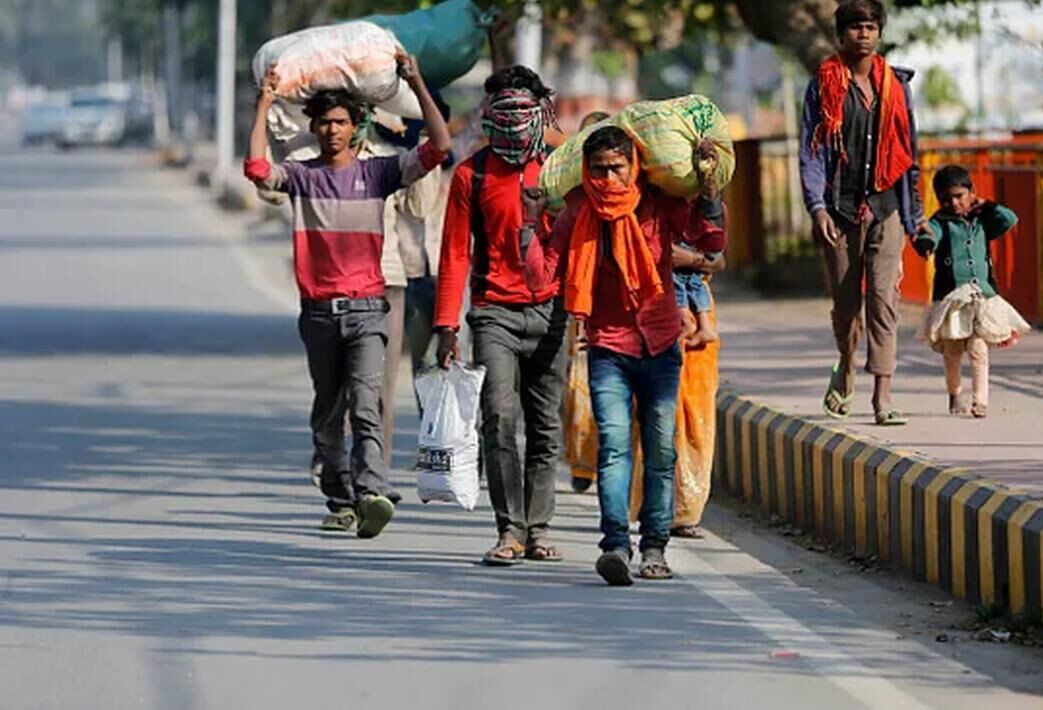Released Date
2022-10-09 | 14:08:52Working group : Economic and labour Migration
Immigrants in Iran's labor market

Based on United Nations statistics in 2020, there are nearly 281 million people in the world who are immigrants, which has increased by almost 27% compared to 2010. Therefore, the study of the effects of immigrants on the destination countries has already been considered. One of the most important sectors affected by immigrants is the labor market.
Immigrants in
Iran's labor market
- Based on United Nations statistics
in 2020, there are nearly 281 million people in the world who are immigrants,
which has increased by almost 27% compared to 2010. Therefore, the study of the
effects of immigrants on the destination countries has already been considered.
One of the most important sectors affected by immigrants is the labor market.
The effect of
immigration on the labor market depends on the skills of the immigrants, local
workforce and the economic conditions of the country of origin. Immigrants
increase the labor supply. On the other hand, they may increase the demand in
the economy due to the increase in the demand for goods and services. For one thing, in fact, immigrants cause competition in existing jobs but on the other side
they create new jobs. The effect of immigrants on the wages and employment of a
country's workforce depends on their skills. If immigrants replace the existing
workforce in a country, competition for jobs will increase and wages will
decrease in the short term.
On the contrary, if the skills of immigrants are
complementary to the domestic labor force, the productivity of native and
immigrant labor will increase and lead to an increase in wages, but if
immigrants and natives are imperfect substitutes within the skill groups, the
increase in labor supply as a result of immigration, first of all, immigrants
which affects those who have already resided in the destination country.
Iran is also
one of the countries that has hosted many immigrants in recent years. These
people have migrated to Iran from neighboring countries (Afghanistan) intentionally. According to
United Nations estimates, the number of Afghan immigrants in Iran in 2020 was
2,710,601, which has grown by 5% in the last decades. The effect of their
migration on Iran's labor market can be studied from different dimensions.
According to the latest information on the labor force in Statistical Center of
Iran in 2019, 539,130 people working in the country are Afghan nationals, which
constitute 2.3% of the working labor force in Iran. In table one,
we have examined the personal and job characteristics of this group. According
to this table, nearly 90% of the Afghan labor force is male and 26.5% are 15-24
years old. Examining the distribution of these people among jobs with different
skills shows that they are mainly engaged in jobs that do not require high
skills.
(Low skill 43%
and medium skill 55.4%) This problem can be caused by two things: 1-According
to the law, foreign labor in Iran can only work in 4 occupational groups: lime
and brick burning jobs, construction works (construction affairs, stone-cutting
and masonry, road construction and mining jobs), agricultural workshops (agricultural,
poultry, husbandry and tanning jobs) and
other job groups such as waste and disposal burning, chemical recycling, Casting furnaces, etc., are put to work. 2-
These people do not have the required skills for other jobs, which is confirmed
by the study of the level of education of this group, so that only 1.25% of the
Afghan working workforce in Iran have an education higher than a
diploma.
On the other
hand, by calculating the unemployment rate of native people at different levels
of education, we find that native people with less than a diploma have the
lowest unemployment rate. (Chart 1) Therefore, it seems that the Afghan labor
force has not had much impact on the labor market of native workers with low
skill levels, and they have not been replaced in the labor market.
By examining
the harmony between education and job among Afghan immigrants, we realized that
1430 of them have university education, but they are working in primary jobs
that do not require much skill, which could be due to impedimenta. Because immigrants without passports have to go through
various steps, including proving their education level, returning to
Afghanistan, and receiving passports and visas, in order to be able to receive
work permits in jobs other than the 4 introduced job groups, which are very
risky in Afghanistan's current conditions.
If these
obstacles are moved and the country's need for labor in different sectors is
identified, these people can be used in different parts. This number is
certainly a small share of the total number of Afghans working in Iran, but two
points should be noted: 1- There is a possibility that Afghan immigrants
underreported their education in the labor force survey design because they
were afraid of losing their jobs. 2- This statistic is only related to official
immigrants. There are no statistics available about informal
immigrants, and according to the recent political conditions in Afghanistan,
the desire to immigrate has increased. But these people have a high probability
of illegally working in jobs below their skill level because they face fewer
obstacles in Iran to work in these jobs.
If it is
possible to use their potential in the required parts of the country. For this
purpose, first of all, some parts of the economy that face skilled labor
shortage should be identified, and then, this shortage should be compensated by
identifying immigrants who have the required expertise in this sector. This
action also has positive effects on the native workforce, because on the one
hand, the complementarity of immigrants' expertise with the native workforce
increases their productivity, and on the other hand, it provides a picture of
the labor market's needs for the inactive workforce to strengthen their
expertise and knowledge in that field.
- No Source
User Comments
- There is no comment!